Dealing with Artist's Block: Tips and Strategies
Artist's block is a common yet often misunderstood phenomenon that can leave even the most seasoned creatives feeling stranded. Imagine being a painter standing before a blank canvas, the vibrant colors swirling in your mind, yet your brush feels glued to the easel. Frustrating, right? This article explores various techniques and strategies to overcome artist's block, providing insights to help creatives reignite their inspiration and maintain their artistic flow.
Artist's block can be a frustrating experience for many creatives. It's that nagging feeling of being stuck, where inspiration seems to evaporate into thin air. The causes of artist's block can be as varied as the artists themselves. Stress, self-doubt, and external pressures can weigh heavily on the creative mind. Some common symptoms include:
- Procrastination: Putting off creative tasks because they feel daunting.
- Negative self-talk: Doubting your abilities and feeling inadequate.
- Lack of motivation: Finding it hard to even start a project.
Recognizing these symptoms is the first step in addressing the struggle. It's essential to understand that artist's block is not a reflection of your talent but rather a temporary state that can be overcome.
Engaging in specific creative exercises can stimulate the mind and reignite passion. Sometimes, all it takes is a little nudge to break free from stagnation. Here are some activities that can help:
Mind mapping is a powerful brainstorming tool that allows you to organize your thoughts visually. By creating a mind map, you can connect ideas and concepts that might otherwise remain isolated. Start with a central theme and branch out with related thoughts, images, or keywords. This technique not only helps in generating new ideas but also allows you to see your creative potential laid out before you.
Creating a visual inspiration board can help artists find motivation. This is like a treasure map for your creativity, guiding you toward your artistic goals. Gather images, colors, and textures that resonate with you and arrange them on a board. This tactile experience can reignite your passion and remind you of what drew you to art in the first place.
Journaling can serve as a reflective practice for artists. By dedicating a few moments each day to writing, you can explore your emotions, thoughts, and ideas. This practice can lead to unexpected insights and new artistic directions. Think of it as a conversation with yourself, where you can unravel the tangled threads of your creativity.
Working collaboratively with other artists can provide fresh perspectives. Collaboration is like a creative potluck; everyone brings their unique flavors to the table, creating a feast of ideas that can inspire you in ways you never thought possible. Whether it's a joint project or simply sharing feedback, the exchange of ideas can be a powerful antidote to artist's block.
Developing a consistent routine can help artists stay engaged with their work. Think of your routine as the backbone of your creative practice. It provides structure and stability, allowing your creativity to flourish within a safe space. Here are some practical tips for creating a daily schedule:
Effective time management is crucial for artists. It's like being the conductor of an orchestra; you need to ensure every section harmonizes beautifully. Prioritize your tasks, set deadlines, and maintain focus. Consider using tools like calendars or apps to keep track of your progress. This way, your creativity flows without interruption, and you can tackle your projects with confidence.
Setting achievable goals helps artists maintain motivation. Instead of looking at a massive project and feeling overwhelmed, break it down into smaller, manageable tasks. This approach makes the creative process feel less daunting and allows you to celebrate small victories along the way. Remember, every great masterpiece starts with a single brushstroke.
Q: What is artist's block?
A: Artist's block is a creative standstill where an artist struggles to produce new work or feels uninspired.
Q: How can I overcome artist's block?
A: Try engaging in creative exercises, establishing a routine, collaborating with others, and practicing self-reflection through journaling.
Q: Is artist's block normal?
A: Yes, many artists experience blocks at some point in their careers. It's a natural part of the creative process.
Q: How long does artist's block last?
A: The duration varies from person to person. Some may experience it for a few days, while others might take weeks or months to overcome it.

Understanding Artist's Block
Artist's block can be a frustrating experience for many creatives, often leaving them feeling trapped in a whirlwind of self-doubt and stagnation. It's like staring at a blank canvas, where every brushstroke feels wrong, and every idea seems to slip through your fingers like sand. But what exactly causes this phenomenon? Understanding the roots of artist's block can be the first step toward overcoming it.
At its core, artist's block can stem from a variety of factors, including:
- Fear of Failure: The pressure to create something perfect can be paralyzing. Many artists worry that their next piece won't live up to their previous work, leading to a creative freeze.
- Perfectionism: When artists set impossibly high standards for themselves, they can easily become overwhelmed, which stifles creativity.
- External Criticism: Feedback from peers, critics, or even friends can weigh heavily on an artist's mind, causing them to second-guess their abilities.
- Lack of Inspiration: Sometimes, the well of ideas simply runs dry. This can happen for various reasons, from burnout to life changes that distract from the creative process.
Recognizing the symptoms of artist's block is equally important. Common signs include:
- Difficulty generating new ideas
- Feeling unmotivated or indifferent about creating
- Experiencing self-doubt and negative thoughts about one's work
- Procrastination or avoidance of artistic tasks
Understanding these causes and symptoms is crucial because it empowers artists to address their struggles directly. Instead of viewing artist's block as an insurmountable barrier, it can be reframed as a temporary hurdle that can be overcome with the right strategies and mindset. Just like a runner who hits a wall during a marathon, recognizing that it's a part of the journey can help you push through and find your rhythm again.
In the following sections, we will explore practical tips and exercises designed to help you reignite your inspiration and maintain your artistic flow. Remember, every artist experiences blocks at some point; it's how you respond to them that truly matters.
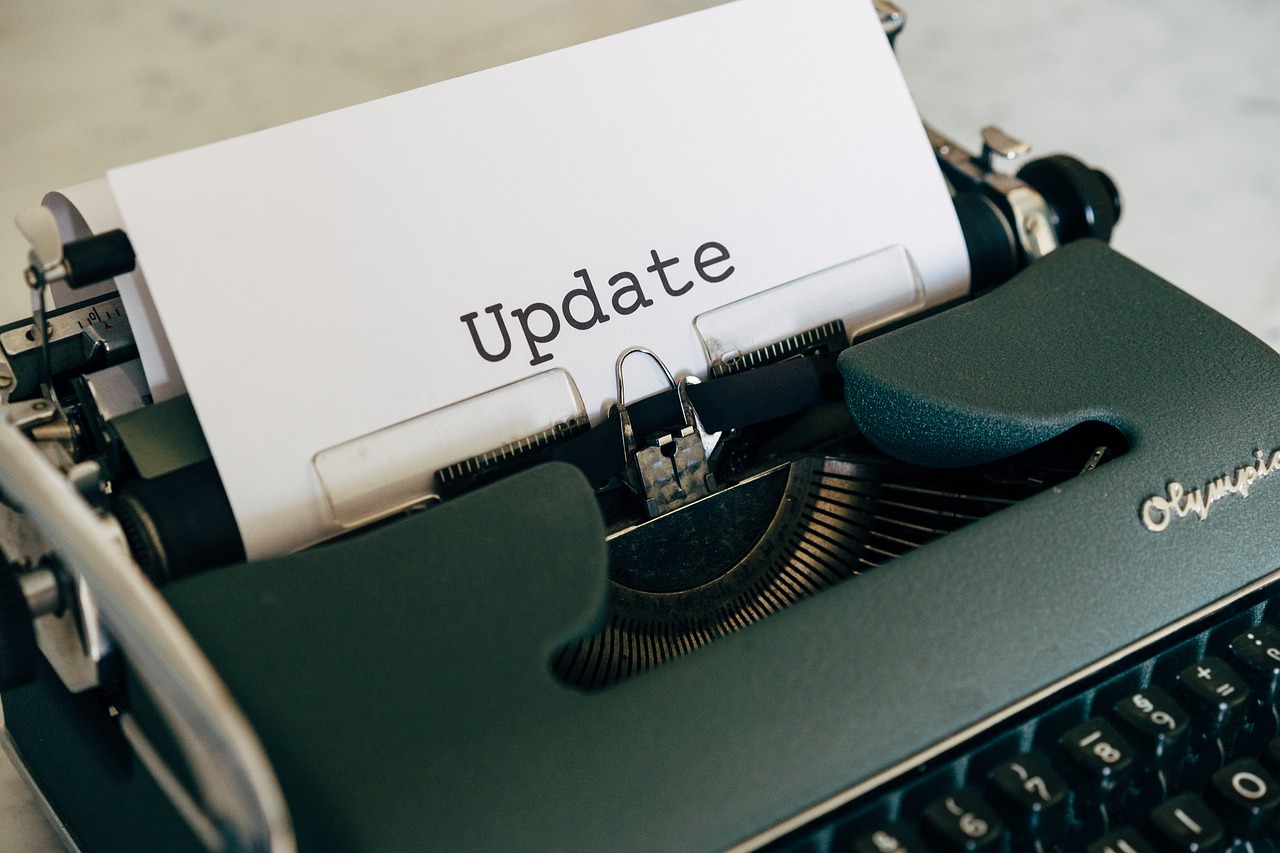
Creative Exercises to Spark Inspiration
When you're stuck in a creative rut, it can feel like you're trying to push a boulder uphill. But fear not! There are numerous creative exercises designed to help you break free from the chains of artist's block and reignite that fiery passion within you. Think of these exercises as a refreshing splash of cold water on your face, jolting you awake and ready to tackle your artistic endeavors with renewed vigor.
One of the most effective ways to spark inspiration is to engage in mind mapping. This technique allows you to visually organize your thoughts, creating a web of ideas that can lead to unexpected connections. Grab a large piece of paper, or use a digital mind mapping tool, and start with a central idea. From there, branch out into related concepts, feelings, or even colors that resonate with that initial thought. You might be surprised at how quickly new ideas start to flow when you give your brain the freedom to wander.
Mind mapping is not just for brainstorming; it’s a pathway to clarity. By organizing your thoughts visually, you can identify patterns or themes that may have been hidden in the chaos of your mind. This exercise can be especially beneficial when you feel overwhelmed by the pressure to create. Instead of forcing yourself to produce something perfect, allow yourself to explore freely. You might just stumble upon a unique concept that takes your work in an exciting new direction!
Another fantastic exercise to ignite your creativity is creating a visual inspiration board. This is essentially a collage of images, colors, and textures that inspire you. Think of it as a mood board for your artistic soul. You can either go old school with scissors and glue, or use digital tools like Pinterest or Canva. The goal here is to curate a collection of visuals that resonate with your personal artistic goals and aspirations. This board can serve as a daily reminder of what you love and what you aim to create, helping you stay motivated and inspired.
Journaling is another powerful tool in your creative arsenal. It’s not just about documenting your day; it’s about exploring your emotions, thoughts, and ideas. Set aside a few minutes each day to write about whatever comes to mind. This could be a stream of consciousness, reflections on your artistic journey, or even doodles that capture your mood. Over time, you might discover themes or ideas that can lead to new projects or artistic directions. Think of your journal as a safe space where you can express yourself without judgment.
Sometimes, the best way to spark inspiration is to collaborate with fellow artists. Working together can provide fresh perspectives and ideas that you may not have considered on your own. Whether it’s a joint art project, a community mural, or just sharing your work with a friend for feedback, collaboration can breathe new life into your creative process. It’s like mixing different colors on a palette; the result can be something entirely unexpected and beautiful!
In conclusion, breaking through artist's block doesn't have to be a daunting task. By engaging in creative exercises like mind mapping, creating visual inspiration boards, journaling, and collaborating with others, you can reignite your passion for art and keep those creative juices flowing. Remember, the key is to stay open to new experiences and ideas. Embrace the process, and watch your creativity flourish!
| Question | Answer |
|---|---|
| What is artist's block? | Artist's block is a condition where an artist feels unable to create or produce work, often due to a lack of inspiration or motivation. |
| How can I overcome artist's block? | Engaging in creative exercises like mind mapping, creating inspiration boards, journaling, and collaborating with others can help overcome artist's block. |
| Is it normal to experience artist's block? | Yes, many artists experience periods of block at some point in their creative journey. It’s a common challenge that can be overcome. |

Mind Mapping Techniques
Mind mapping is like giving your creativity a turbo boost! It’s a visual brainstorming technique that allows artists to organize their thoughts and ideas in a way that’s both engaging and effective. Imagine your mind as a sprawling tree, with each branch representing a different idea or concept. By using mind maps, you can explore these branches and discover new paths that lead to artistic inspiration. This technique can be incredibly helpful when you're feeling stuck, as it encourages free flow of ideas without the constraints of traditional linear thinking.
To get started with mind mapping, all you need is a piece of paper and some colored pens or pencils. Begin by writing your central idea in the middle of the page. From there, draw branches that represent related concepts or themes. Use different colors for each branch to make it visually appealing and easier to distinguish between ideas. As you expand your map, don’t hesitate to add images or symbols that resonate with you. This not only enhances the visual aspect but also makes the process more enjoyable.
One of the key benefits of mind mapping is that it helps you see connections between ideas that you might not have noticed before. For instance, you may find that a recent experience in your life connects to a specific theme you want to explore in your artwork. This realization can lead to a flood of new ideas and a renewed sense of purpose. Moreover, mind mapping can be done individually or in groups, allowing for collaborative brainstorming sessions that can further enrich your artistic journey.
Here’s a simple table to illustrate the steps involved in creating a mind map:
| Step | Description |
|---|---|
| 1 | Choose a central idea that you want to explore. |
| 2 | Draw branches that represent related themes or concepts. |
| 3 | Add colors, images, and symbols to enhance creativity. |
| 4 | Explore connections between different branches and ideas. |
| 5 | Use the map as a springboard for new projects or artworks. |
Incorporating mind mapping into your creative process can be a game-changer. It allows you to break free from conventional thinking and opens the door to a world of possibilities. So the next time you find yourself staring at a blank canvas or a blank page, grab your colored pens and start mapping out your thoughts. You might be surprised at the incredible ideas that emerge!

Visual Inspiration Boards
Creating a visual inspiration board is like crafting a personal treasure map for your creativity. It’s a space where your dreams, ideas, and aspirations converge, helping you navigate through the often murky waters of artist's block. By curating images, colors, and textures that resonate with your artistic goals, you not only find motivation but also create a tangible representation of your creative vision. Imagine walking into a room filled with your favorite colors and images that spark joy—this is what a visual inspiration board can do for your artistic journey.
To start, gather materials that speak to you. This could be a corkboard, a large piece of paper, or even a digital platform like Pinterest. The key is to collect items that inspire you. Here are some ideas to consider:
- Images: Cut out pictures from magazines, print images from the internet, or use your own photographs that capture moments of inspiration.
- Colors: Include swatches of colors that evoke emotions you want to channel into your work.
- Textures: Add fabric samples, paper types, or any materials that appeal to your sense of touch.
Once you have your materials, let your creativity flow! Arrange them in a way that feels right to you. There are no strict rules—this is your board, your vision. You might find that certain themes emerge as you work, revealing deeper insights into what inspires you. For example, if you notice a lot of nature-themed images, perhaps it’s time to explore that direction in your art.
Moreover, placing your visual inspiration board in a prominent spot in your workspace can serve as a daily reminder of your artistic goals. Every glance at your board can reignite your passion and keep you focused on what truly matters. As you evolve as an artist, don’t hesitate to update your board. It should grow and change with you, reflecting your current inspirations and aspirations.
In essence, a visual inspiration board is more than just a collection of images; it’s a powerful tool in your creative arsenal. It helps to clarify your artistic vision, keeps your motivation high, and can even serve as a catalyst for new ideas. So, grab your scissors, glue, and imagination, and start building a board that speaks to your soul!
Q: What materials do I need to create a visual inspiration board?
A: You can use a corkboard, poster board, or a digital platform. Gather magazines, printouts, fabric swatches, and any other materials that inspire you.
Q: How often should I update my inspiration board?
A: There’s no set rule! Update it whenever you feel your inspirations changing or when you discover new elements that resonate with you.
Q: Can I create a digital inspiration board?
A: Absolutely! Platforms like Pinterest or digital design tools allow you to curate and organize your inspirations online, making it easy to access anytime.
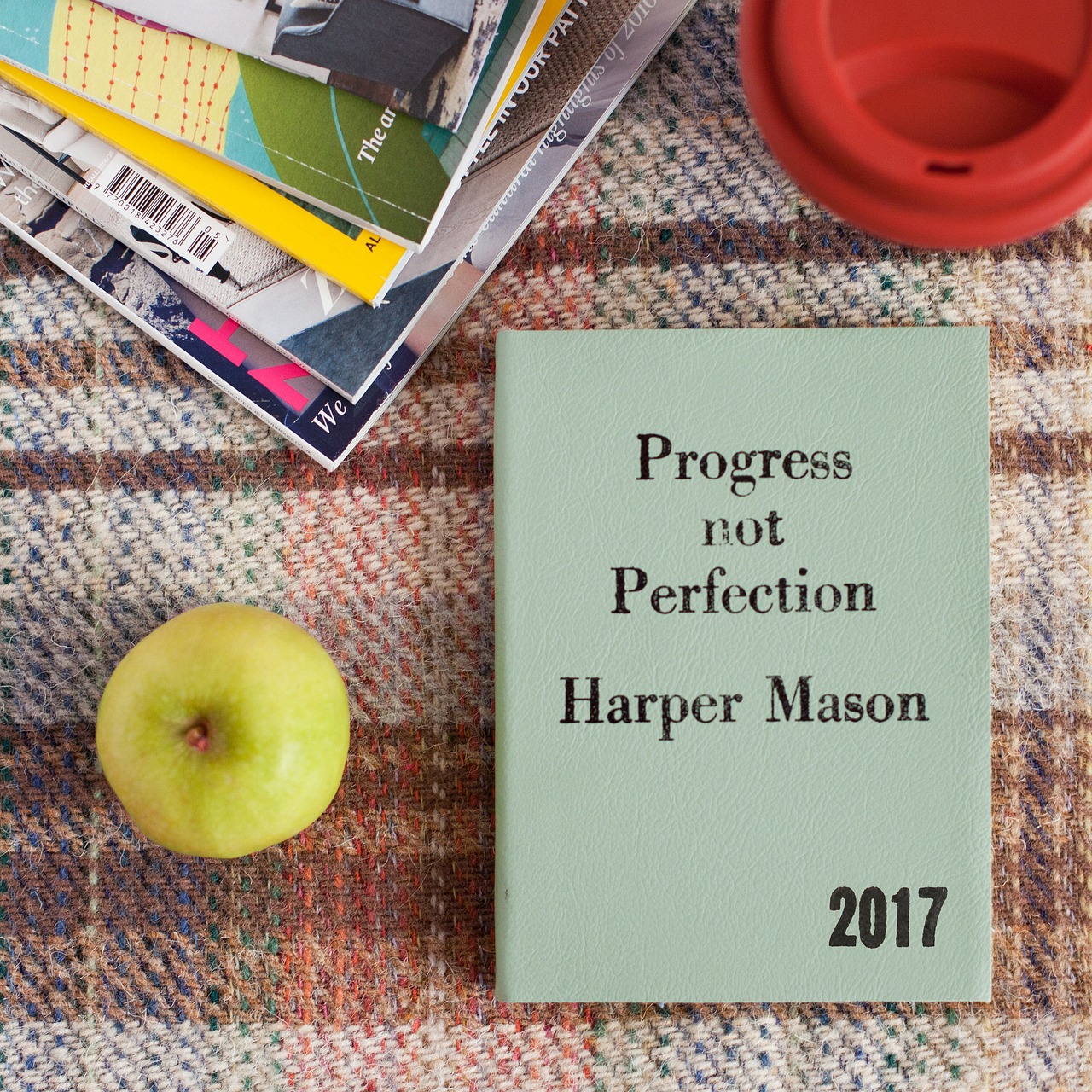
Daily Journaling Practices
Daily journaling is more than just putting pen to paper; it's a transformative practice that can help artists dive deep into their thoughts and emotions. Imagine your mind as a cluttered attic, filled with boxes of ideas, feelings, and inspirations. Each day, journaling acts like a flashlight, illuminating those hidden corners, allowing you to sift through the chaos and discover treasures that can reignite your creative spark.
One of the most significant benefits of daily journaling is its ability to clear mental fog. When you're feeling stuck, writing down your thoughts can help you articulate what’s blocking your creativity. It’s like talking to a friend—only this friend is your own mind. You might find that once you start writing, a flood of ideas begins to flow. You may ask yourself questions like, “What am I truly feeling today?” or “What inspired me this week?” and in response, your pen might just dance across the page, revealing insights you didn’t even know you had.
To get the most out of your journaling practice, consider incorporating various styles and techniques. Here are a few approaches you might find helpful:
- Stream of Consciousness: Write continuously for a set period, letting your thoughts flow without judgment. This can help uncover underlying emotions and ideas.
- Prompts and Questions: Use specific prompts to guide your writing. Questions like “What challenges did I face today?” or “What am I grateful for?” can provide direction.
- Art Journaling: Combine writing with sketches or doodles. This can be particularly beneficial for visual artists, as it allows you to express ideas in multiple forms.
Establishing a routine for your journaling practice can also make a significant difference. Consider setting aside a specific time each day—perhaps in the morning with your coffee or at night before bed. This consistency helps create a habit, making it easier to express your thoughts regularly. You might even want to create a cozy space dedicated to your journaling, filled with your favorite materials, such as colorful pens, stickers, or inspirational quotes. This environment can act as a creative sanctuary, encouraging you to engage with your reflections more deeply.
Ultimately, the goal of daily journaling is not just to write but to connect with your inner artist. It’s a space for exploration, experimentation, and self-discovery. As you pour your thoughts onto the page, you may find that your artistic block begins to dissolve, replaced by a renewed sense of inspiration. So grab that journal, and let your thoughts flow—who knows what incredible ideas are waiting to be uncovered!
Q: How long should I journal each day?
A: Start with just 10-15 minutes a day. As you get more comfortable, you can increase the time if you wish.
Q: What if I don't know what to write about?
A: Use prompts or questions to guide your writing. You can also write about your day, your feelings, or anything that inspires you.
Q: Can I combine journaling with art?
A: Absolutely! Many artists find that combining writing with sketches or doodles enhances their creativity.

Collaborative Projects
When it comes to breaking free from the clutches of artist's block, can be a game-changer. Imagine being in a room filled with other creative minds, each bringing their unique perspectives and talents to the table. It’s like a potluck dinner where every dish adds flavor to the experience, making it richer and more fulfilling. Collaborating with fellow artists not only allows you to share ideas but also creates an environment where inspiration can flourish. This synergy often leads to unexpected outcomes that can reignite your passion for creating.
One of the most significant advantages of working collaboratively is the fresh perspectives that come into play. When you’re stuck in your own head, it can be challenging to see beyond your own ideas. However, inviting another artist into your process can open up new avenues of thought. For instance, if you’re a painter, teaming up with a musician could inspire you to explore color and emotion in ways you never considered. These collaborations can lead to the creation of something entirely new and exciting, pushing the boundaries of your creativity.
Moreover, collaborative projects can serve as a source of accountability. When you’re working on your own, it’s easy to procrastinate or lose motivation. But when you have a partner or a team relying on you, that pressure can help keep you on track. You’re not just creating for yourself anymore; you’re part of a collective effort. This shared responsibility can transform your approach to art, making it more dynamic and engaging.
Here are a few ways to kickstart collaborative projects:
- Join an Artist Collective: Many cities have local artist collectives where creatives come together to share resources, ideas, and support.
- Attend Workshops: Workshops often encourage group projects, allowing you to meet other artists and brainstorm together.
- Online Collaborations: In today’s digital age, collaborating with artists from around the world is easier than ever. Platforms like social media can help you connect with like-minded individuals.
In conclusion, embracing collaborative projects can be a powerful antidote to artist's block. By opening yourself up to the ideas and talents of others, you can rediscover your creative spark and explore new artistic horizons. So, grab a fellow artist, brainstorm some ideas, and see where the journey takes you!
Q: How do I find artists to collaborate with?
A: You can start by joining local art groups, attending workshops, or connecting on social media platforms dedicated to artists.
Q: What if I don’t have a specific project in mind?
A: That’s perfectly fine! Sometimes, just getting together and sharing ideas can lead to exciting new projects. Consider brainstorming sessions or informal meet-ups.
Q: Can collaborating with others help improve my skills?
A: Absolutely! Collaborating allows you to learn from others, gain new techniques, and see different approaches to art, which can significantly enhance your skills.
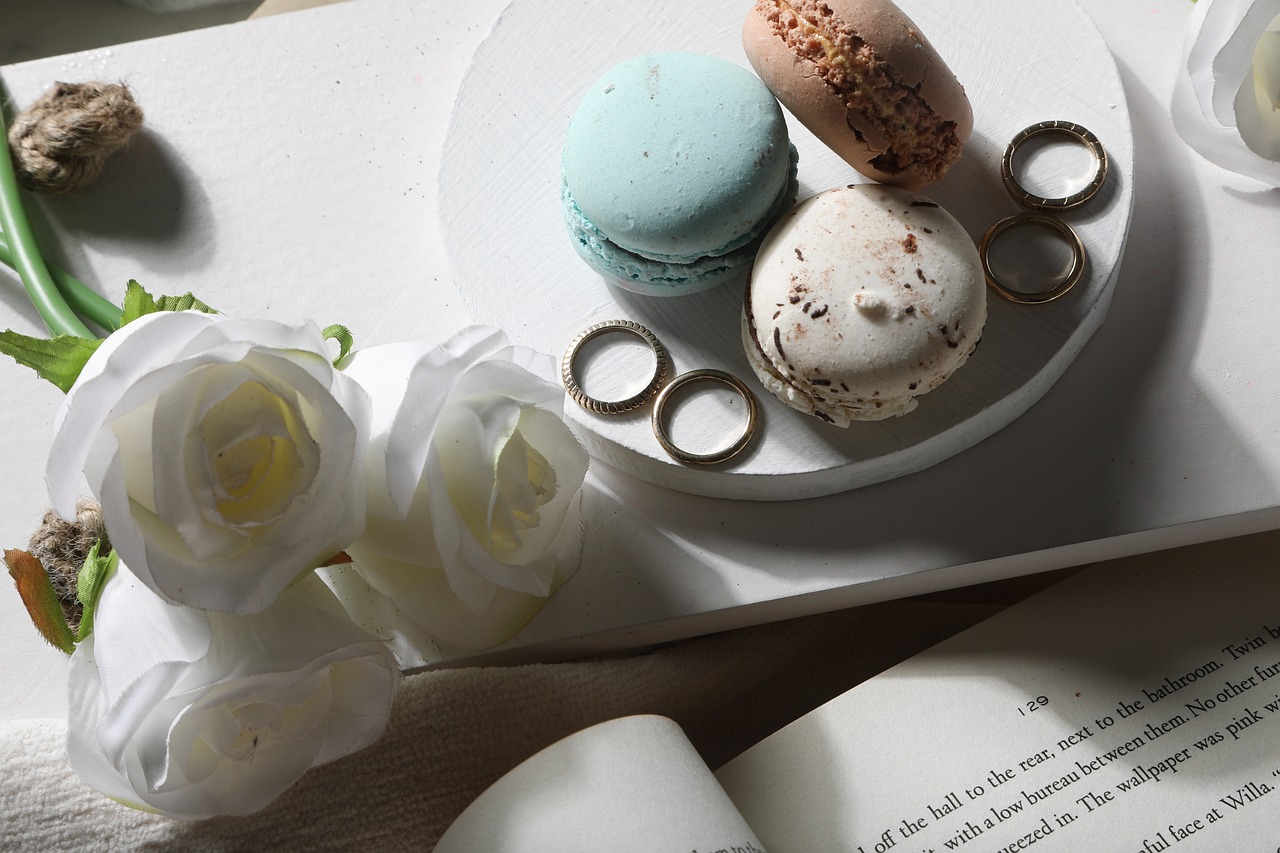
Establishing a Routine
Establishing a routine is like laying down the tracks for a train; without them, you might find yourself derailed in the vast landscape of creativity. For artists, a consistent routine can be the secret sauce that keeps the creative juices flowing. It helps in creating a structured environment where inspiration can thrive. Think about it: when you wake up at the same time every day, your brain starts to anticipate what comes next. This anticipation can transform into a fertile ground for creativity. But how do you go about building this routine? Let's dive into some practical tips!
First off, it's important to create a dedicated space for your artistic endeavors. Whether it's a cozy nook in your living room or a fully equipped studio, having a designated area can signal to your brain that it's time to get into the creative zone. This space should be free from distractions, allowing you to immerse yourself fully in your work. You might even consider adding elements that inspire you, such as artwork, plants, or your favorite music. The goal is to create an environment that feels like a sanctuary for your creativity.
Next, think about the timing of your creative sessions. Are you a morning person, or do you thrive under the moonlight? Understanding your natural rhythms can help you determine the best times to engage in your art. Some artists find that their minds are clearest in the early hours, while others may feel more inspired late at night. Experiment with different times of day and see when your creativity peaks. Once you identify these golden hours, try to schedule your artistic activities accordingly.
In addition to timing, time management is crucial. You might want to consider using a calendar or planner to map out your creative sessions. For instance, you could dedicate certain days of the week to specific projects. This not only helps in organizing your tasks but also gives you something to look forward to. Here’s a simple example of how you might structure your week:
| Day | Focus Area | Time Slot |
|---|---|---|
| Monday | Sketching Ideas | 10 AM - 12 PM |
| Tuesday | Painting | 1 PM - 3 PM |
| Wednesday | Digital Art | 4 PM - 6 PM |
| Thursday | Collaboration Projects | 2 PM - 5 PM |
| Friday | Reflection and Journaling | 7 PM - 8 PM |
Another essential aspect of establishing a routine is setting realistic goals. It’s easy to get overwhelmed when you look at an entire project as a whole. Instead, break it down into smaller, manageable tasks. For instance, if you're working on a large painting, set a goal to complete the sketch in one session, and then focus on painting specific sections in subsequent sessions. This approach not only makes the project feel less daunting but also gives you a sense of accomplishment as you check off each completed task.
Lastly, don’t forget to allow for flexibility in your routine. Life happens, and sometimes you might need to adjust your schedule. The key is to remain committed to your artistic practice while being adaptable. If a day doesn’t go as planned, don’t beat yourself up. Instead, view it as an opportunity to explore new ideas or take a break to recharge. Remember, creativity isn’t a straight path; it’s more like a winding road full of surprises!
In summary, establishing a routine can significantly enhance your artistic flow. By creating a dedicated space, understanding your timing, managing your time effectively, setting realistic goals, and allowing for flexibility, you can cultivate an environment that nurtures your creativity. So, why not take the plunge and start crafting your artistic routine today?
- What should I do if I miss a day in my routine? – It's perfectly normal! Just pick up where you left off and don't stress about it.
- How long does it take to establish a routine? – It varies for everyone, but consistency over a few weeks can help solidify your routine.
- Can I change my routine? – Absolutely! Feel free to adjust your routine as your creative needs evolve.
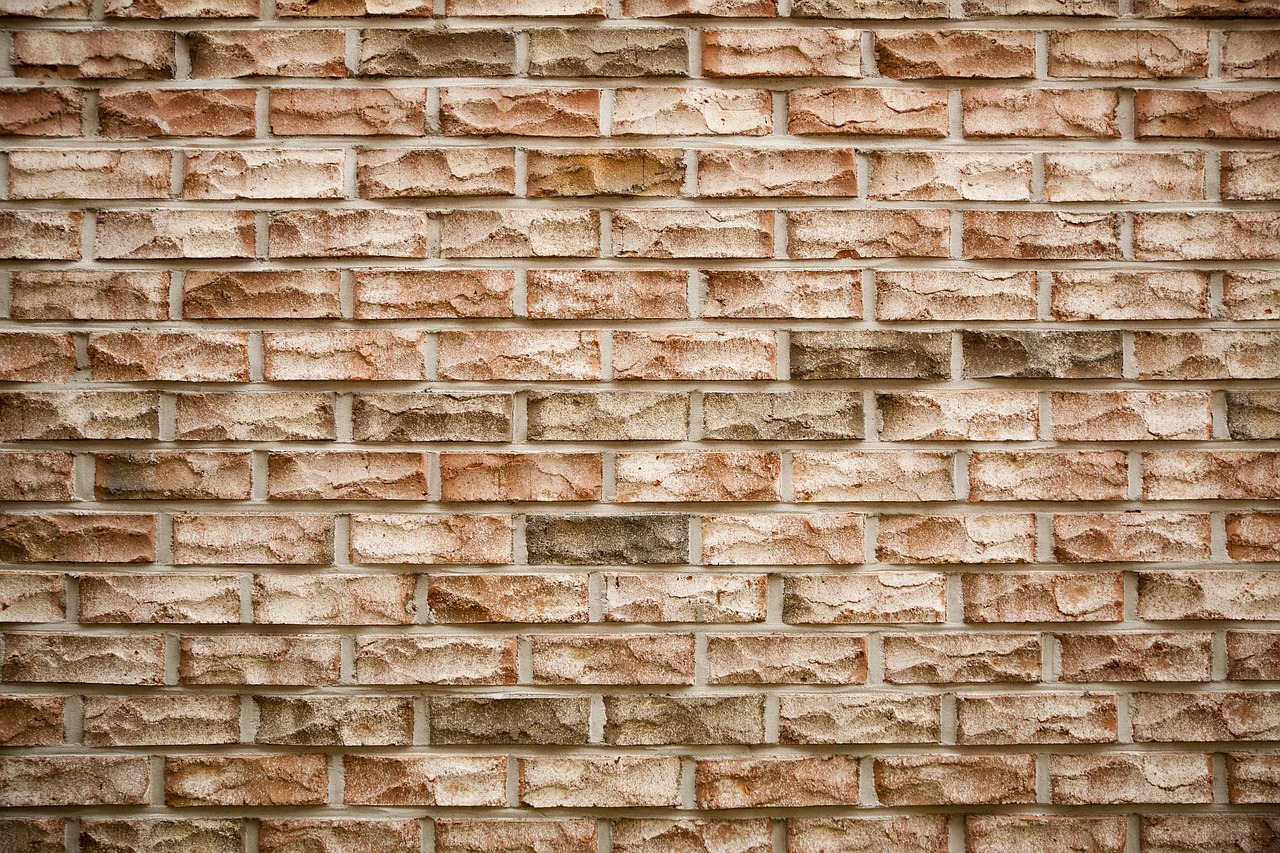
Time Management Techniques
Time management is an essential skill for artists, as it not only helps in maximizing productivity but also ensures that creativity flows seamlessly. Imagine trying to paint a masterpiece while constantly glancing at the clock—stressful, right? To avoid this, artists need to implement effective time management techniques that allow them to focus on their craft without the nagging pressure of deadlines. One effective method is the Pomodoro Technique, which involves working in focused bursts of 25 minutes followed by a 5-minute break. This approach not only enhances concentration but also helps prevent burnout, making the creative process feel less overwhelming.
Another strategy is to create a weekly planner that outlines specific tasks and goals for each day. By visually organizing your week, you can prioritize your projects and allocate time slots for each task. This way, you won't find yourself scrambling at the last minute. Here’s a simple example of how a weekly planner might look:
| Day | Tasks | Time Allocation |
|---|---|---|
| Monday | Sketching ideas | 2 hours |
| Tuesday | Research materials | 1 hour |
| Wednesday | Painting session | 3 hours |
| Thursday | Review and refine | 2 hours |
| Friday | Collaborative project | 3 hours |
Additionally, setting realistic deadlines can significantly enhance your time management. Instead of giving yourself a vague timeline, try breaking down larger projects into smaller, manageable tasks. This not only makes the project feel less daunting but also allows for a sense of accomplishment as you complete each task. For instance, if you're working on a large painting, set deadlines for completing the sketch, laying down the base colors, and adding details. Each completed step brings you closer to your final masterpiece and keeps the motivation high.
Lastly, don’t forget to incorporate flexibility into your schedule. Life is unpredictable, and sometimes creativity strikes at odd hours. Allowing for some wiggle room in your time management plan can help you adapt and seize those spontaneous bursts of inspiration. Remember, the goal is to create a balance where your artistic endeavors flourish while you still manage your time effectively. So, grab your planner, set those timers, and unleash your creativity without the chaos of mismanaged time!
- What is the Pomodoro Technique?
The Pomodoro Technique is a time management method that encourages people to work in short, focused intervals (typically 25 minutes), followed by a short break. This helps maintain high levels of productivity and focus. - How can I create a weekly planner?
A weekly planner can be created using a physical notebook, a digital calendar, or even a simple spreadsheet. Outline your tasks for each day and allocate specific time slots to work on them. - Why is flexibility important in time management?
Flexibility allows you to adapt to unexpected situations and seize moments of inspiration, ensuring that your creativity isn't stifled by a rigid schedule.
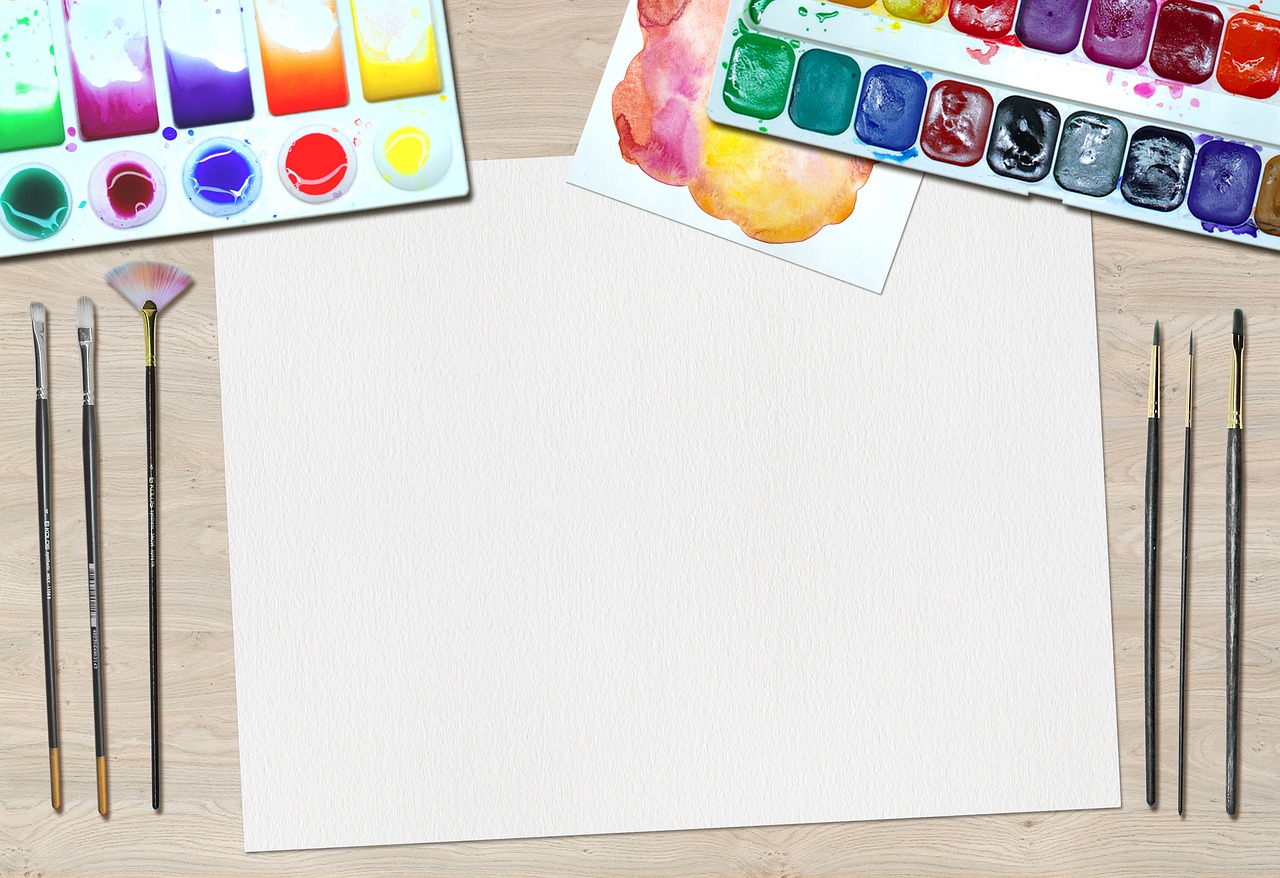
Setting Realistic Goals
Setting realistic goals is essential for artists who want to maintain their motivation and creativity. Think of your artistic journey as a marathon, not a sprint. Just like a runner wouldn't try to complete a marathon without training, artists shouldn't expect to produce masterpieces without a structured plan. By breaking down larger projects into smaller, manageable tasks, you can create a roadmap that guides you through your creative process, making it feel less daunting and more achievable.
When you set realistic goals, you provide yourself with a clear direction. This clarity helps in reducing anxiety and frustration, which often accompany artist's block. To illustrate, imagine you're working on a large painting. Instead of aiming to finish the entire piece in one day, you could set goals like sketching the outline, choosing a color palette, or completing one section at a time. This approach not only makes the task feel less overwhelming but also allows you to celebrate small victories along the way.
Here are some key strategies for setting realistic goals:
- Be Specific: Instead of saying, "I want to paint more," specify, "I will complete one painting every two weeks." This specificity gives you a clear target to aim for.
- Be Measurable: Ensure that your goals can be tracked. For instance, if you want to improve your drawing skills, set a goal to draw for 30 minutes every day.
- Be Attainable: While it's great to dream big, ensure your goals are achievable. If you're a beginner, don't set a goal to exhibit in a gallery within a month; instead, aim to complete a few pieces first.
- Be Relevant: Your goals should align with your artistic vision. If you want to explore abstract art, set a goal to experiment with this style rather than focusing on realism.
- Be Time-Bound: Assign deadlines to your goals. This creates a sense of urgency and helps keep you accountable. For example, aim to finish a sketch by the end of the week.
By implementing these strategies, you can create a balanced approach to your artistic endeavors. Remember, the journey of an artist is filled with ups and downs, and setting realistic goals can help you navigate through the ebbs and flows of creativity. Moreover, regularly reviewing and adjusting your goals is crucial. Just as a sailor adjusts their sails based on the wind, you too should modify your goals based on your progress and changing circumstances. This flexibility allows you to stay engaged and inspired, keeping the creative juices flowing.
1. What if I don’t meet my goals?
It's completely normal not to meet every goal. Use these moments as learning experiences. Reflect on what went wrong and adjust your future goals accordingly.
2. How often should I set new goals?
It's a good idea to revisit your goals every month or after completing a significant project. This allows you to stay aligned with your artistic vision and adapt to any changes in your creative process.
3. Can setting goals stifle creativity?
While some may feel that goals limit their creativity, when done right, they can actually enhance it. Goals provide structure, which can free your mind to explore new ideas without feeling lost.
4. How do I stay motivated to achieve my goals?
Celebrate your achievements, no matter how small. Surround yourself with supportive peers, and remember to take breaks to refresh your creativity. Motivation often comes in waves, so be gentle with yourself.
Frequently Asked Questions
- What is artist's block?
Artist's block is a creative slump where artists struggle to produce work or feel uninspired. It's like hitting a wall where ideas just don't flow, leaving you frustrated and stuck.
- What causes artist's block?
There are many reasons for artist's block, including stress, self-doubt, fear of failure, or even external pressures. Sometimes, it's just a natural part of the creative process, like a rainy day that eventually gives way to sunshine.
- How can I overcome artist's block?
There are several strategies to break through artist's block. Try engaging in creative exercises, like mind mapping or journaling. Collaborating with other artists can also provide fresh perspectives and ignite your inspiration.
- What are mind mapping techniques?
Mind mapping is a visual brainstorming tool that helps organize your thoughts. By creating a diagram that connects ideas, you can see the bigger picture and generate new concepts more easily.
- How do I create a visual inspiration board?
To create a visual inspiration board, gather images, colors, and textures that resonate with your artistic goals. You can use magazines, online resources, or even your own artwork to curate a collection that inspires you.
- Are daily journaling practices beneficial for artists?
Absolutely! Daily journaling allows artists to explore their thoughts and feelings, helping to clear mental clutter. It's a great way to reflect on your creative journey and discover new ideas.
- How can establishing a routine help with creativity?
Having a routine can help you stay engaged with your work. By setting aside dedicated time for creativity, you can develop a habit that encourages inspiration and productivity, making it easier to get into the flow.
- What time management techniques can I use as an artist?
Effective time management involves prioritizing tasks, setting deadlines, and breaking projects into smaller, manageable steps. This helps maintain focus and ensures that your creativity flows without interruptions.
- How do I set realistic goals for my artistic projects?
To set realistic goals, break down larger projects into smaller tasks. This makes the creative process feel less overwhelming and helps you maintain motivation as you achieve each milestone along the way.



















